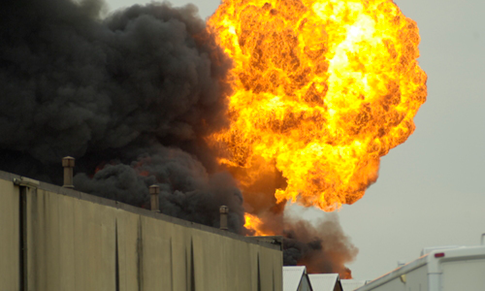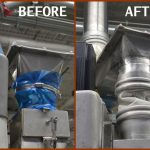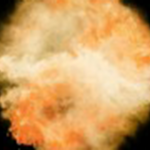How Proper Dust Collection Minimizes Powder Processing Plant Explosion Hazards
In January of this year, an explosion at a grain processing facility in Omaha killed two people and injured ten. Witnesses described hearing a loud noise and then seeing a fireball within seconds before the building collapsed. The Occupational Safety and Health Administration (OSHA) is still conducting an investigation. They consider animal feed grain dust to be highly combustible, and is also considered to be extremely dangerous.
Five experts in building structures and grain dust explosions say early indications point to dust as the likely cause.
The National Fire Protection Association (NFPA) sets standards and codes to protect buildings against fire and explosion risks, and OSHA is enforcing these standards with increasing vigilance. In a dry bulk solids processing or handling plant, one of the most common locations for a combustible dust explosion is the dust collection system. When explosions occur here, the culprit is often a combination of common mistakes.
Explosive Conditions
According to explosion expert Vahid Ebadat, PhD, a number of conditions must exist simultaneously for a flash fire or dust flare-up to occur:
- Dust must be combustible
- Dust must be dispersed forming a cloud in air
- Dust concentration must be above the Minimum Combustion Concentration
- Sufficient oxidants must be present to support combustion of the dust cloud
- An ignition source with sufficient energy to initiate flame propagation must be present
In a March 2014 issue of Occupational Health & Safety (OH&S), Tony Supine and Mike Walters write, “Combustible dust explosions are a risk in many areas of an industrial plant, and one of the likeliest locations for an explosion is in the plant’s dust collection system.” In relation to a dust collection system purchase they add,
“Every EHS manager is acquainted with the benefits of basing purchasing decisions on life-cycle cost–sometimes called ‘total cost of ownership’–over choosing equipment with the lowest price tag. A dust collector is no exception. A well-designed dust collection system can pay for itself rapidly in energy and maintenance savings, costing far less to operate than a unit with a low initial price.”
Capture, Convey and Collect
At Powder Process-Solutions, our dust collection systems are custom designed based on the proven formula of Capture, Convey and Collect the dust. We engineer a custom solution, not a catalog “cookie cutter” approach using the mantra of capture, convey and collect.
Capture – We will evaluate the source of the dust and operational requirements to engineer the best hood design to capture dust at the source. Minimum capture velocities are required to pull the dust out of the atmosphere and away from the operator.
Convey – Duct is properly sized and routed to maintain a minimum conveying velocity. Incorrectly designed ductwork can allow the dust to settle, robbing system performance and creating an unsafe condition. A suction fan is selected for the calculated CFM and static pressure.
Collect – Dust must be separated from the air stream using an appropriate dust separator (cyclone, bag house scrubber, etc.). Collected dust must also be discharged from the separator in a safe manner for recovery or disposal.
Our dust collection system helps process plants comply with OSHA and NFPA regulations by controlling in-plant and environmental pollution.
Contact us to learn more about designing a dust collection system that will maintain the sanitation, safety and efficiency of your powder processing plant.





